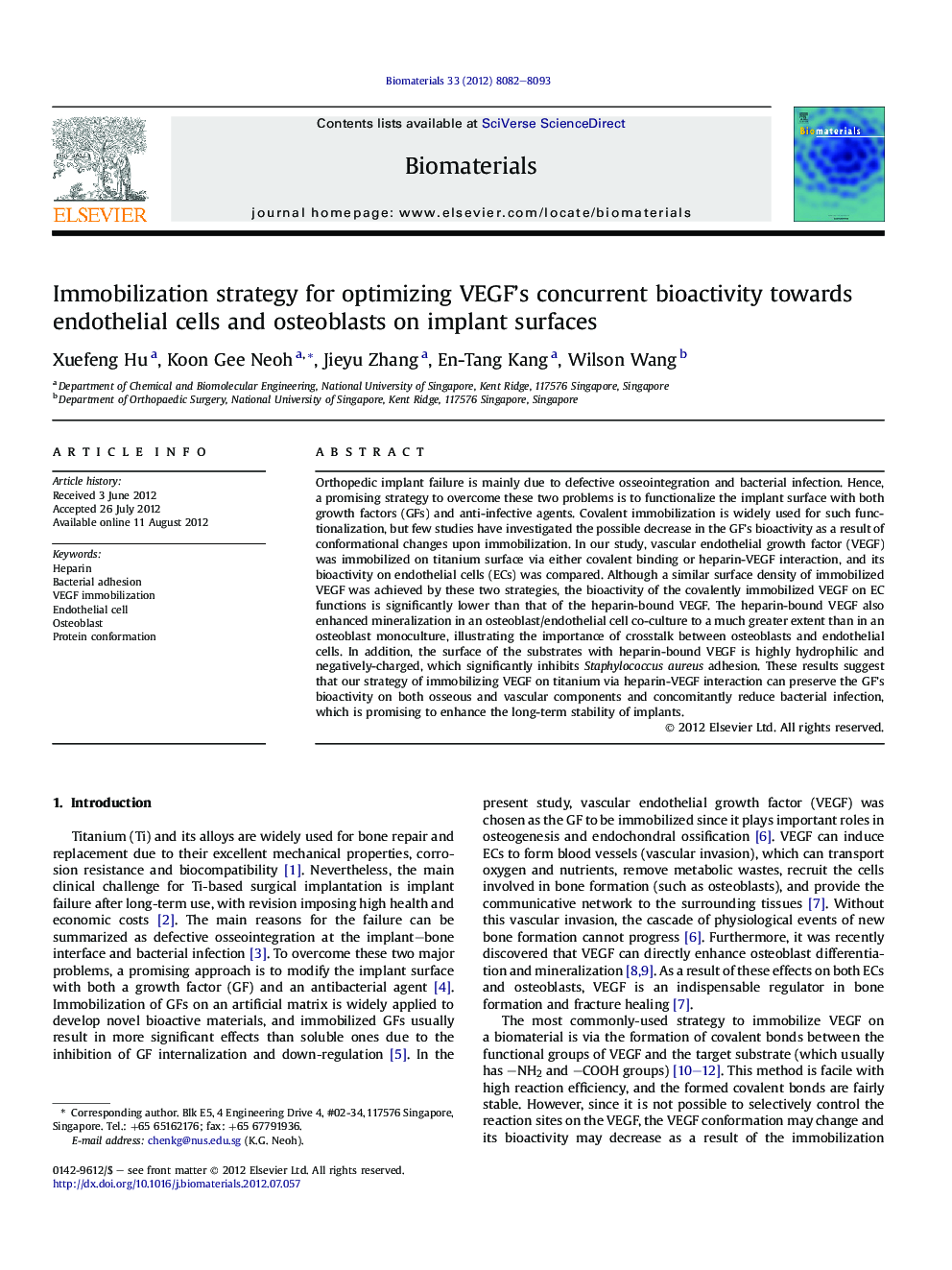| Article ID | Journal | Published Year | Pages | File Type |
|---|---|---|---|---|
| 10229099 | Biomaterials | 2012 | 12 Pages |
Abstract
Orthopedic implant failure is mainly due to defective osseointegration and bacterial infection. Hence, a promising strategy to overcome these two problems is to functionalize the implant surface with both growth factors (GFs) and anti-infective agents. Covalent immobilization is widely used for such functionalization, but few studies have investigated the possible decrease in the GF's bioactivity as a result of conformational changes upon immobilization. In our study, vascular endothelial growth factor (VEGF) was immobilized on titanium surface via either covalent binding or heparin-VEGF interaction, and its bioactivity on endothelial cells (ECs) was compared. Although a similar surface density of immobilized VEGF was achieved by these two strategies, the bioactivity of the covalently immobilized VEGF on EC functions is significantly lower than that of the heparin-bound VEGF. The heparin-bound VEGF also enhanced mineralization in an osteoblast/endothelial cell co-culture to a much greater extent than in an osteoblast monoculture, illustrating the importance of crosstalk between osteoblasts and endothelial cells. In addition, the surface of the substrates with heparin-bound VEGF is highly hydrophilic and negatively-charged, which significantly inhibits Staphylococcus aureus adhesion. These results suggest that our strategy of immobilizing VEGF on titanium via heparin-VEGF interaction can preserve the GF's bioactivity on both osseous and vascular components and concomitantly reduce bacterial infection, which is promising to enhance the long-term stability of implants.
Related Topics
Physical Sciences and Engineering
Chemical Engineering
Bioengineering
Authors
Xuefeng Hu, Koon Gee Neoh, Jieyu Zhang, En-Tang Kang, Wilson Wang,
